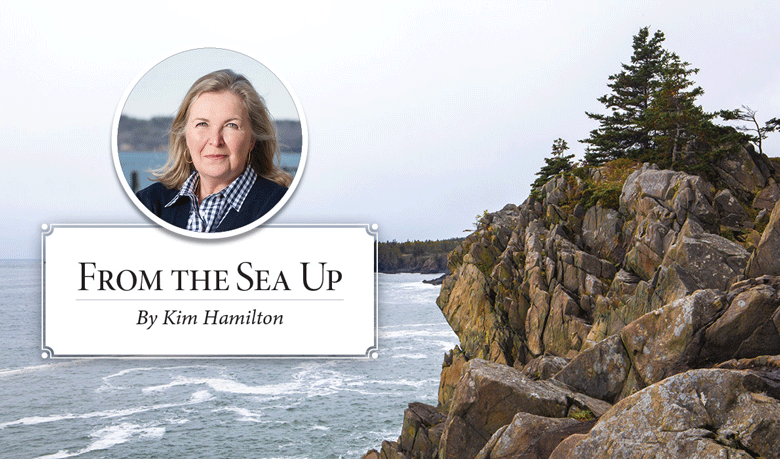When Island Institute began publishing this newspaper, The Working Waterfront, 30 years ago, we picked our name with intention. We wanted to cover local, critical, and the sometimes hidden yet prescient stories that spoke to the economy, politics, and culture on Maine’s islands and coasts.
No other mental image quite captured the space between sea and land, the bridge that connected people to the economy, or Maine’s marine heritage than the iconic working waterfront.
Those same working waterfronts that animated the origins of our newspaper nearly four decades ago have been slowly disappearing, despite investments by the state and others in this critical coastal infrastructure.
Maine’s toolkit to prevent the conversion of working waterfronts to noncommercial uses is still, however, woefully small.
Investments by the state of Maine in the 1980s in publicly owned fish piers in Kennebunkport, Portland, Boothbay Harbor, Vinalhaven, Rockland, and Stonington helped secure those local assets. Some of these same piers—and many others along the coast—could trace their origins back to the 19th century granite industry and were deeply and historically embedded in local economic activities.
Island Institute undertook a mapping project in 2005 to understand the dimensions of waterfront access for commercial fishermen and marine related business. Along Maine’s 5,300-mile coastline, we identified 1,045 points of access. Of those, only 81 points included parking, all-tide access, and on-site fuel. That shockingly low number in 2005 has continued to shrink. Considering the value of the lobster industry to the Maine economy and the growing potential of aquaculture, further losses to commercial waterfront access are an economic calamity in the making.
Fortunately, there are tools now at our disposal. The Working Waterfront Access Protection Program through the Land for Maine’s Future Program helps put more commercial waterfront under protection in perpetuity. To date, 34 properties have been protected.
For some this is a great program. For projects that need to happen quickly or where people don’t want to partner with the state, this is not the right solution.
Thanks, however, to recent legislative changes spearheaded by the Island Institute and other partners, local land trusts can now hold working waterfront covenants, thus bringing in more private sector money and moving more nimbly when necessary. Maine’s toolkit to prevent the conversion of working waterfronts to noncommercial uses is still, however, woefully small.
These tools do little to address the other threats to working waterfronts, such as storm surge, sea level rise, and costly and complicated insurance policies that make holding onto these assets ever more costly. This is especially true as warming in the Gulf of Maine is bringing changes to scale, type, and manner of fishing.
The tools also do little to address the pressures on coastal housing and on waterfront development that are at the heart of a growing number of community conflicts and costly litigation.
This year, we continue our deep commitment to protecting those unique places that connect our communities to the sea and our economy to the world. Working with our partners in the Working Waterfront Coalition, you’ll hear more from us about the state of Maine’s working waterfronts. We’ll look forward to sharing more about public and private efforts to secure Maine’s fishing future, and supporting those businesses that, in return for access to the water, provide critical community goods, services, and jobs that make our coast vibrant.
I can’t imagine a better banner for this newspaper today. I hope you’ll join us—as private citizens, businesses, thought leaders, landowners, and fans of Maine—in protecting this extraordinarily important feature of Maine’s coast, the working waterfront.
Kim Hamilton is president of Island Institute, publisher of The Working Waterfront. She may be contacted at khamilton@islandinstitute.org.





